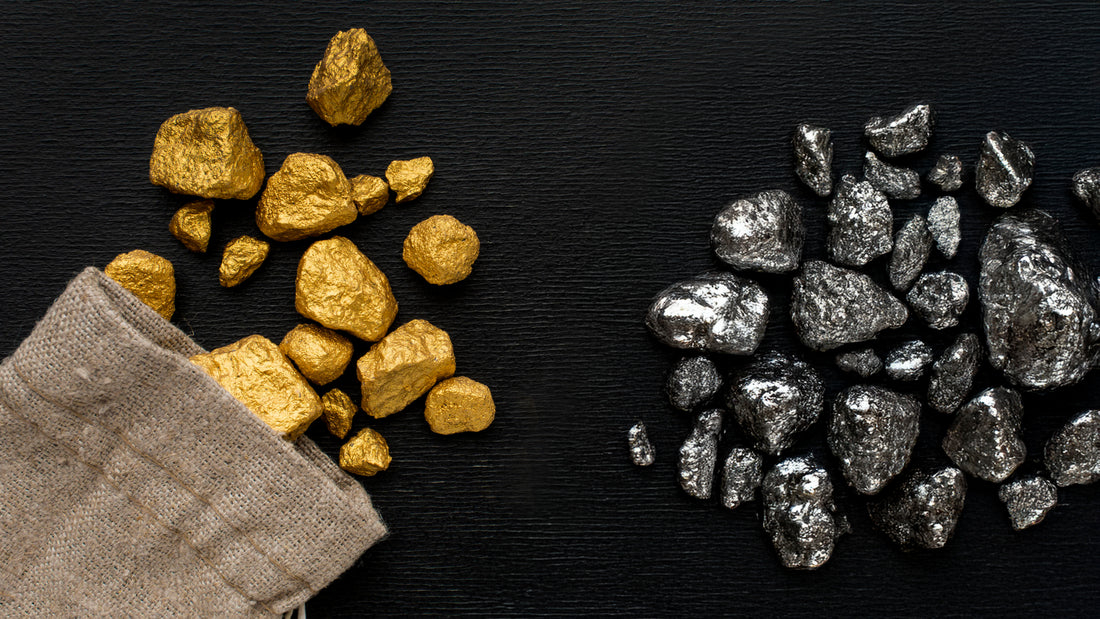
Is Gold the Most Expensive Metal?
Share
Gold has long been celebrated for its value, beauty, and role as a universal currency, but is it the most expensive metal on Earth? Surprisingly, it isn’t! Metals like Californium, Iridium, and Rhodium surpass gold in price. However, despite their worth, these high-value metals are rarely used in jewellery. Let’s dive into the reasons why gold remains a jewelry staple, and why other costly metals don’t often find their way into rings, bracelets, or necklaces.
- Gold’s Popularity and Practicality
Gold is prized for its vibrant color, malleability, and resistance to tarnish and corrosion. It has been used in jewellery for centuries, and its value is recognized globally. Although it is softer than some other metals, pure gold (24 karat) is often alloyed with metals like copper or silver to make it more durable while maintaining its aesthetic appeal. The balance between beauty, durability, and affordability makes gold highly practical for everyday jewellery.
- The Real High-Price Metals
Other metals like Californium, Iridium, and Rhodium are pricier than gold due to rarity and demand in industrial sectors. Rhodium, for example, is commonly used in catalytic converters in the automotive industry, and its price can fluctuate significantly based on global demand.
- Why Don’t These Expensive Metals Make It to Jewellery?
- Californium: The Ultra-Expensive Synthetic Metal
Overview:
With a staggering price of around $27 million per gram (or about $765 million per ounce), Californium is one of the most expensive materials on Earth. This synthetic, radioactive element was first produced in the 1950s and has extremely limited availability, with only a few grams made annually.
Why Californium Isn’t Used in Jewellery:
- Radioactive Properties: Californium’s radioactivity makes it dangerous to handle without special equipment, ruling out its use in any wearable form.
- Limited Availability and Astronomical Cost: The cost of Californium, combined with its complex production process, makes it inaccessible for jewellery.
- Lack of Aesthetic Appeal: As a synthetic element with no distinct appearance or traditional beauty, Californium lacks the visual appeal that’s essential in jewellery design.
- Iridium: Super-Resistant but Impractical for Jewellery
Overview:
At approximately $4,800 per ounce, Iridium is one of the densest and most corrosion-resistant metals. Its remarkable durability makes it a top choice for industrial applications but presents challenges for jewellers.
Why Iridium Isn’t Used in Jewellery:
- Difficult to Work With: Iridium is extremely hard and brittle, making it difficult to shape and mold into intricate jewellery designs. Its density also makes it heavy and less comfortable to wear.
- Industrial Demand and Cost: With high demand in sectors like electronics, aerospace, and scientific research, Iridium’s price is driven by its specialized uses, making it too costly for widespread use in jewellery.
- Aesthetic Limitations: Iridium doesn’t offer a unique or aesthetically desirable appearance compared to metals like platinum or gold, limiting its appeal for jewellery design.
- Rhodium: The Rare Metal for a Reflective Finish
Overview:
Rhodium, often valued around $4,300 per ounce, is a highly reflective, silver-white metal prized for its brilliance and corrosion resistance. It is generally obtained as a byproduct of platinum and nickel mining and is far rarer than gold.
Why Rhodium Isn’t Used Directly in Jewellery:
- Brittleness: Rhodium is too brittle to be shaped into jewellery pieces, as it can crack under stress. Its durability lies more in surface resilience than in structural strength.
- High Cost and Industrial Demand: Rhodium’s high price is largely driven by the automotive industry’s demand for catalytic converters. Using it as a primary metal in jewellery would be prohibitively expensive.
- Use as a Plating Material Only: Rhodium is often used as a plating to give white gold or silver a reflective, tarnish-resistant finish, which is more cost-effective and durable than making jewellery solely out of rhodium.
- Gold’s Cultural Significance and Market Stability
Gold holds a unique position in many cultures, valued not only for its material worth but also for its symbolism in wealth, power, and tradition. It’s often seen as a stable investment due to its global market acceptance. While other metals fluctuate more sharply in price and availability, gold’s relative market stability makes it ideal for jewellery that can be worn and passed down through generations.
Though gold is not the world’s most expensive metal, it remains one of the most beloved choices for jewellery due to its beauty, durability, and historical significance. Other expensive metals may have a higher price tag, but their industrial demand, unique properties, and rarity often limit their use in jewellery. Gold continues to hold its place as the classic choice in jewellery, balancing value and practicality in a way that few other metals can match.
